A guide to the Nine Circles of Hell according to Dante's Inferno.
From the sins that will land you a place in each circle (including astrology and political corruption) to how you'll be punished and who else is already there...
From the sins that will land you a place in each circle (including astrology and political corruption) to how you'll be punished and who else is already there...
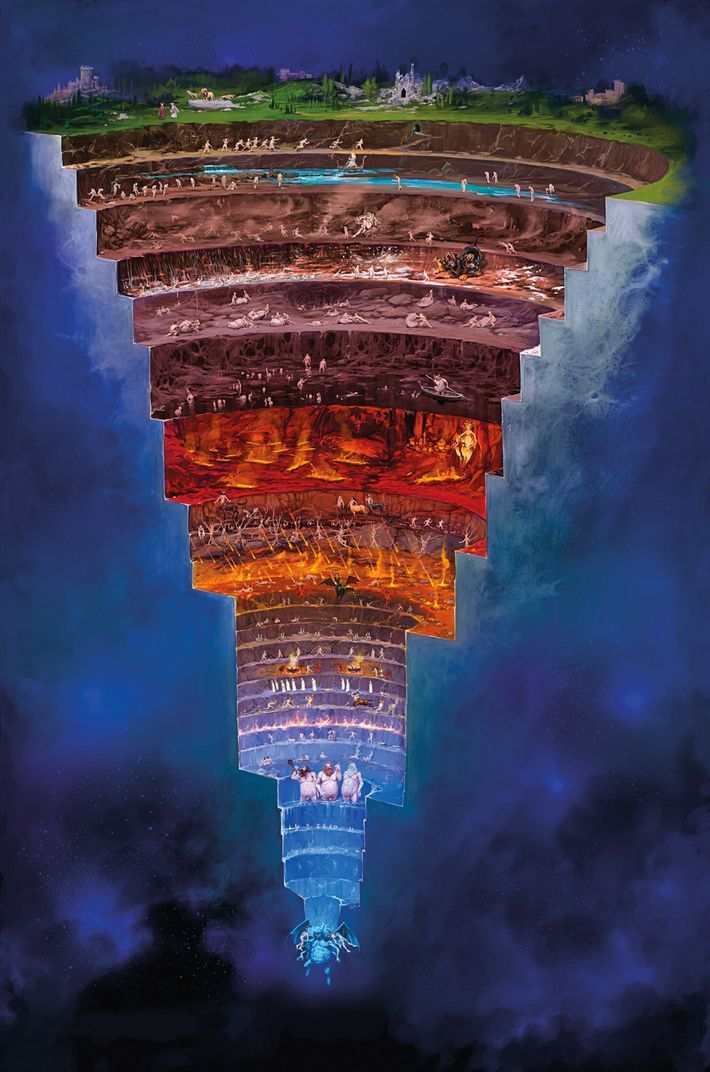
It begins in a dark forest at midnight on Maundy Thursday, the day before Good Friday, in the year 1300.
Dante is pursued by three beasts - a lion, a leopard, and a wolf - before the ghost of the ancient Roman poet Virgil saves him.

Dante is pursued by three beasts - a lion, a leopard, and a wolf - before the ghost of the ancient Roman poet Virgil saves him.

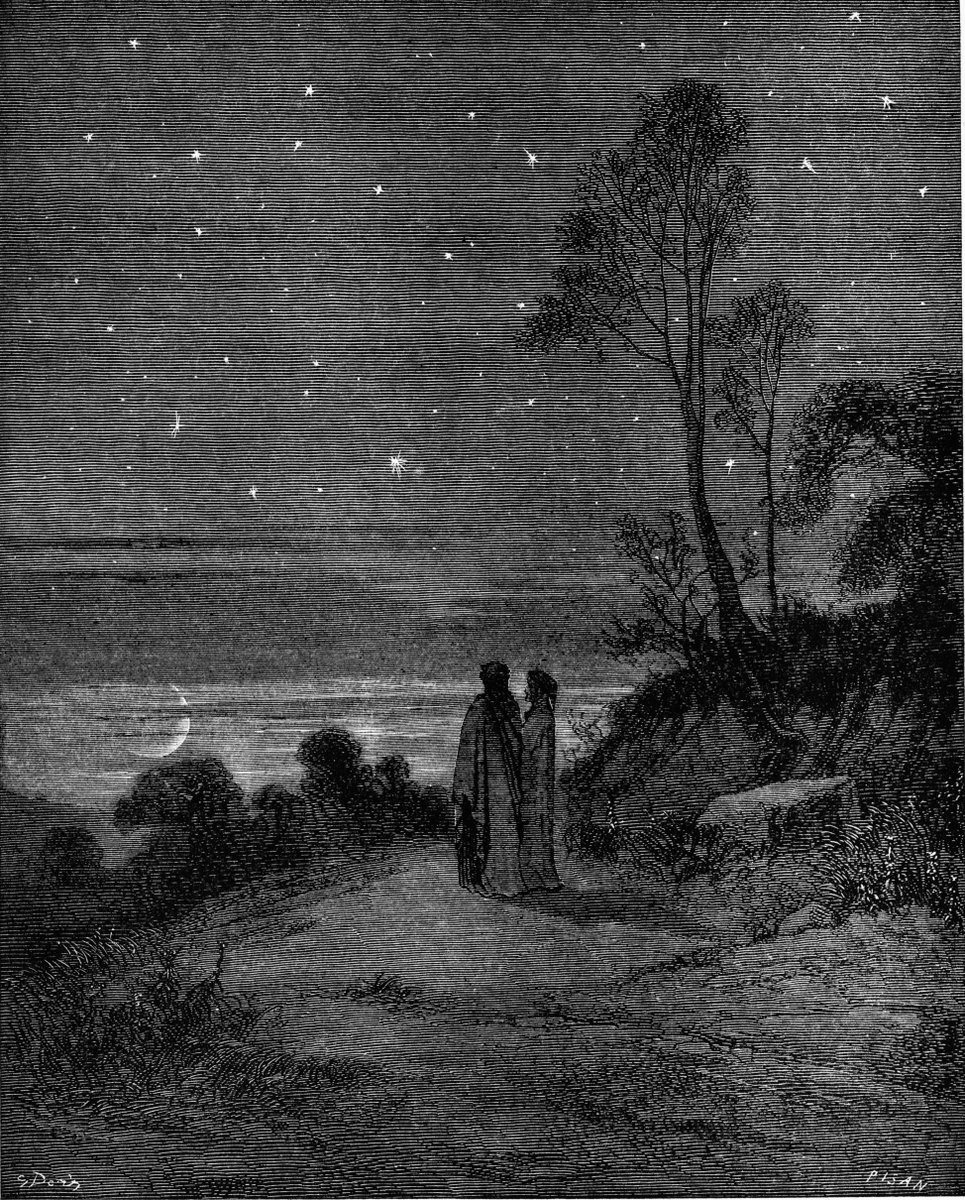
Virgil has been sent to help Dante travel through Hell on a journey of personal salvation.
They leave the forest and reach the doorway to the underworld, above which are written the words: "Abandon all hope, ye who enter here."
They leave the forest and reach the doorway to the underworld, above which are written the words: "Abandon all hope, ye who enter here."
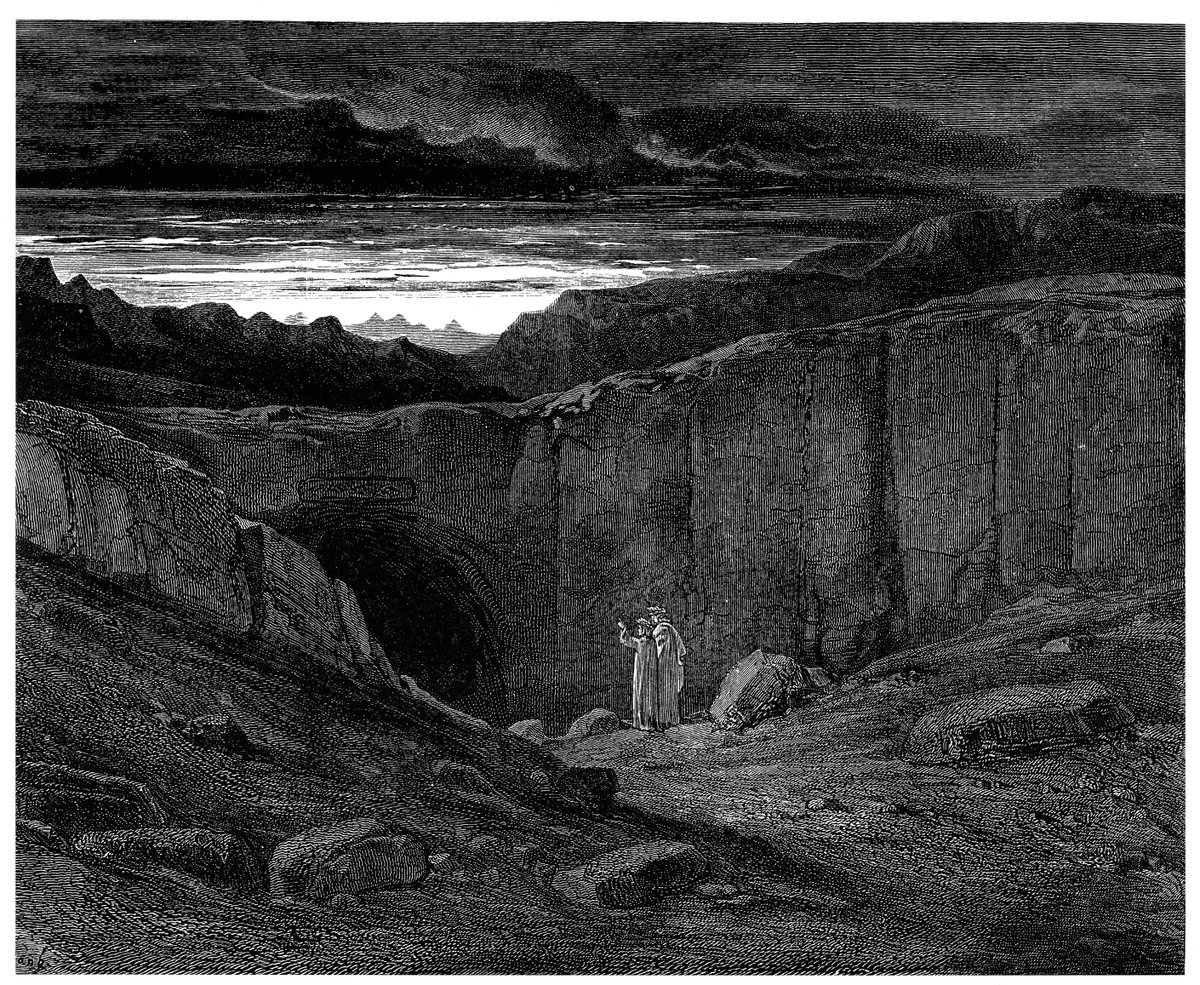
They enter the outer reaches of Hell, reserved for people who neither did evil nor good in life.
An unclassified group not quite in Hell nor out of it, trapped on the shores of the River Acheron and pursued by wasps, surrounded by maggots feeding off their blood and tears.
An unclassified group not quite in Hell nor out of it, trapped on the shores of the River Acheron and pursued by wasps, surrounded by maggots feeding off their blood and tears.
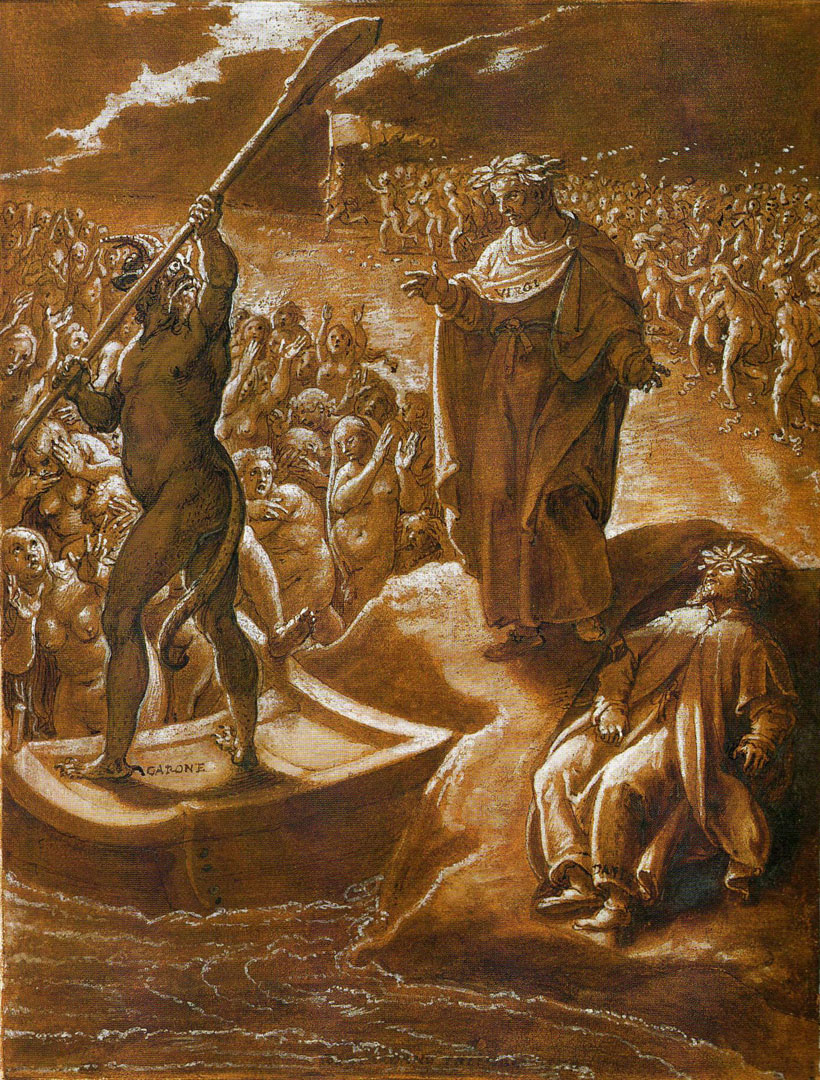
The ferryman Charon takes Dante and Virgil across to Limbo. It's the First Circle, for those who never had a chance to be baptised but still lived virtuous lives.
There are poets like Homer and, in a castle with seven gates, the likes of Plato, Julius Caesar, and Saladin.
There are poets like Homer and, in a castle with seven gates, the likes of Plato, Julius Caesar, and Saladin.

Next is the Second Circle. Its entrance is guarded by Minos. All those entering Hell must confess their sins to him; he then sends them to their place in Hell.
The Second Circle is for those guilty of lust, condemned to be forever whirled through the air by a violent hurricane.

The Second Circle is for those guilty of lust, condemned to be forever whirled through the air by a violent hurricane.
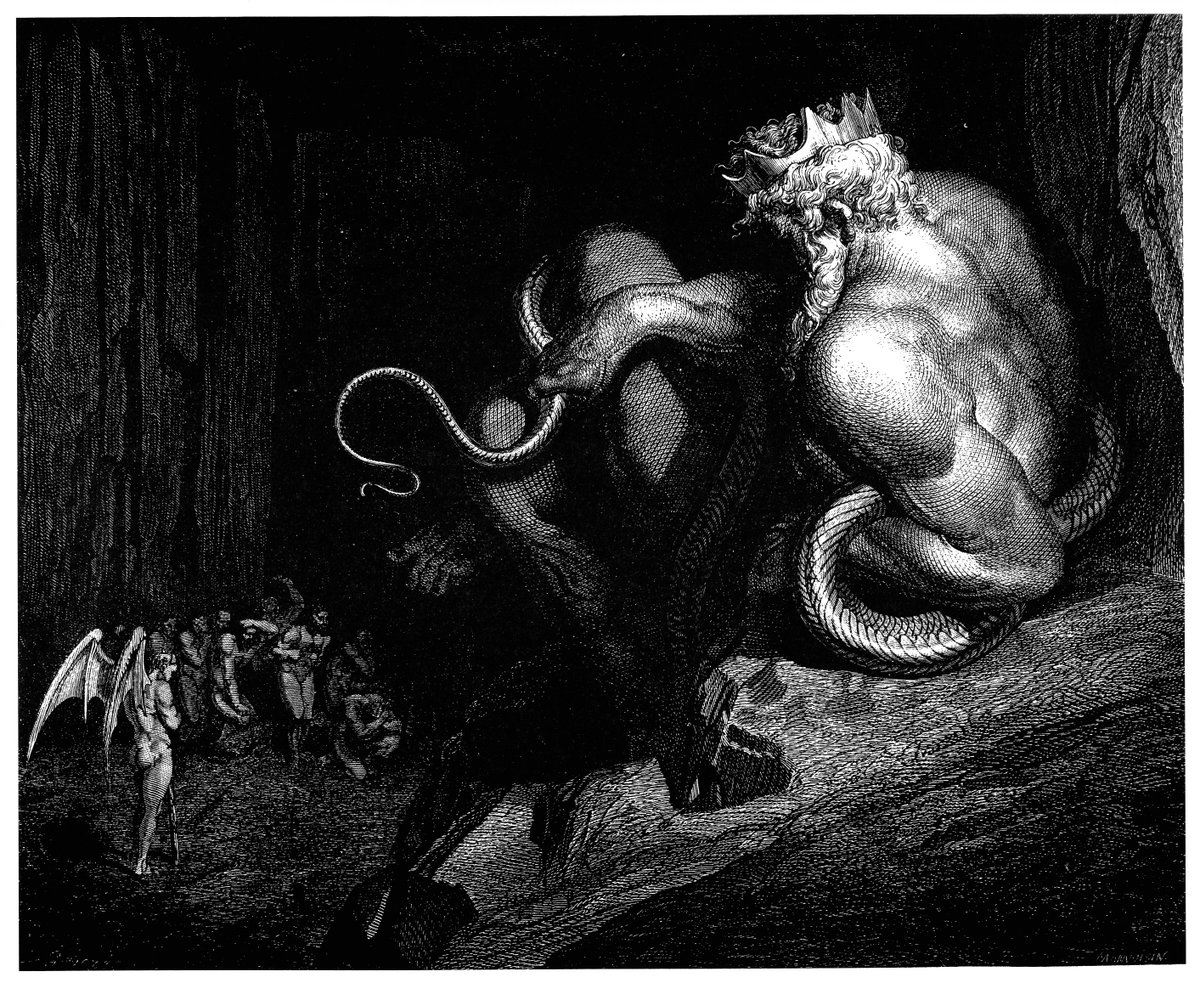
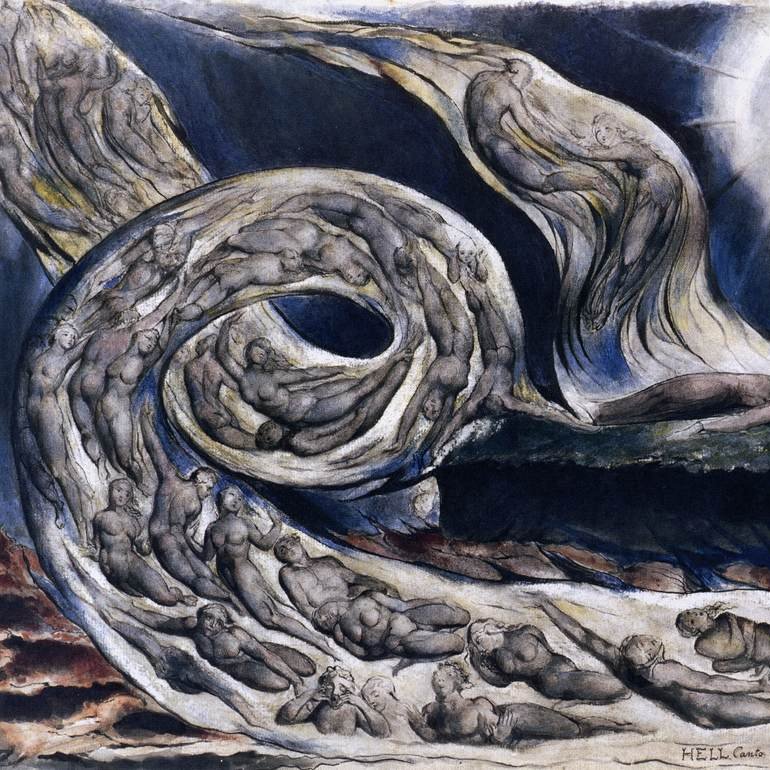
The Third Circle, guarded by the three-headed dog Cerberus, is for those guilty of gluttony: greed and excess in food, alcohol, vices, and luxuries.
Gluttons are forced to live and writhe in a putrid slime produced by a never-ending rain of cold, foul-smelling filth.
Gluttons are forced to live and writhe in a putrid slime produced by a never-ending rain of cold, foul-smelling filth.

The Fourth Circle is for those guilty of greed: both people who horde huge material wealth and those who squander it.
These two groups are forced to fight one another eternally with huge and heavy sacks.
These two groups are forced to fight one another eternally with huge and heavy sacks.

The Fifth Circle is the River Styx itself, essentially a huge marsh, where the wrathful are condemned.
Those who were actively wrathful fight one another in the surface of the stinking mud, while those who were quietly wrathful wallow in silence beneath.
Those who were actively wrathful fight one another in the surface of the stinking mud, while those who were quietly wrathful wallow in silence beneath.

After the Fifth Circle comes Dis, the City of the Underworld, guarded by fallen angels and surrounded by the Styx. It marks the entry to Lower Hell.
Dante and Virgil are ferried across the marshes to the gates of Dis by Phlegyas; you can see the city in the background here.
Dante and Virgil are ferried across the marshes to the gates of Dis by Phlegyas; you can see the city in the background here.

Dante and Virgil enter Dis with the help of an angel who forces the Furies to let them in.
Once within Dis there is the Sixth Circle, where heretics are trapped in burning tombs. People here include the philosopher Epicurus and Holy Roman Emperor Frederick II.

Once within Dis there is the Sixth Circle, where heretics are trapped in burning tombs. People here include the philosopher Epicurus and Holy Roman Emperor Frederick II.
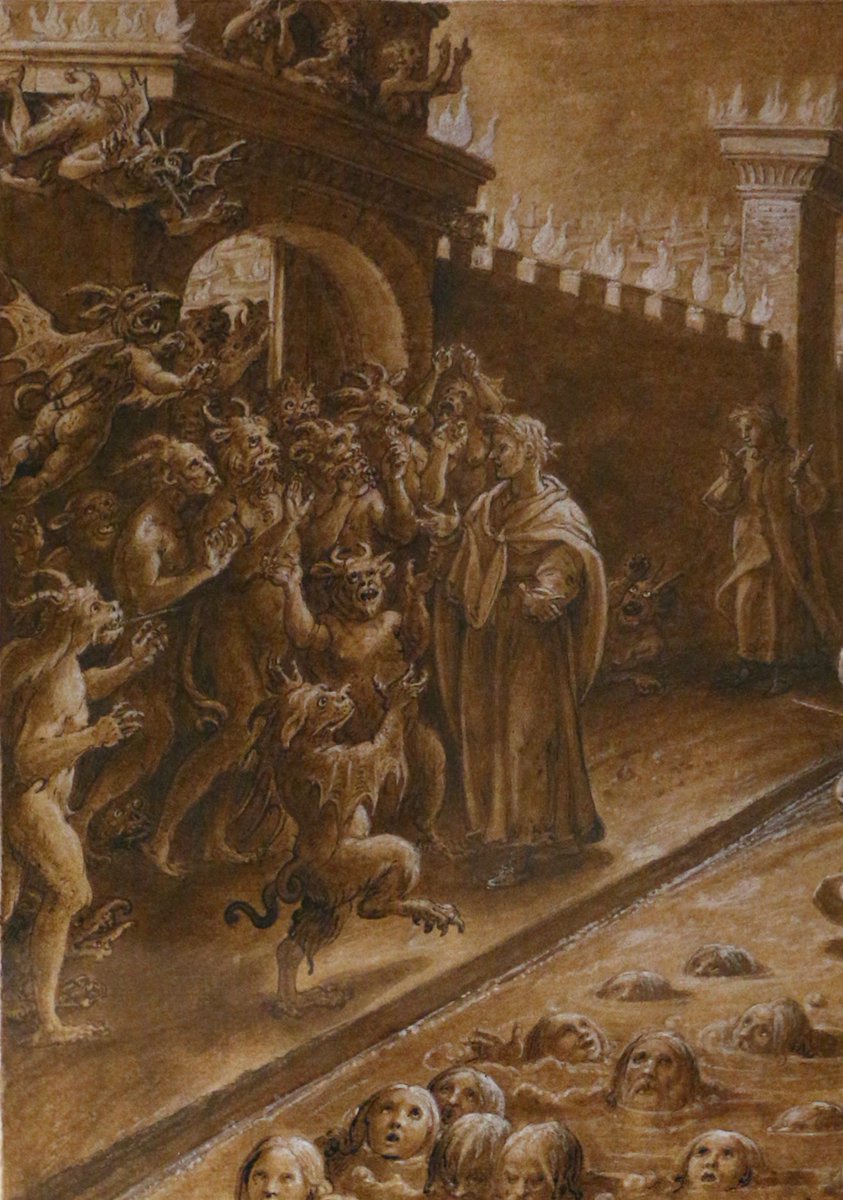
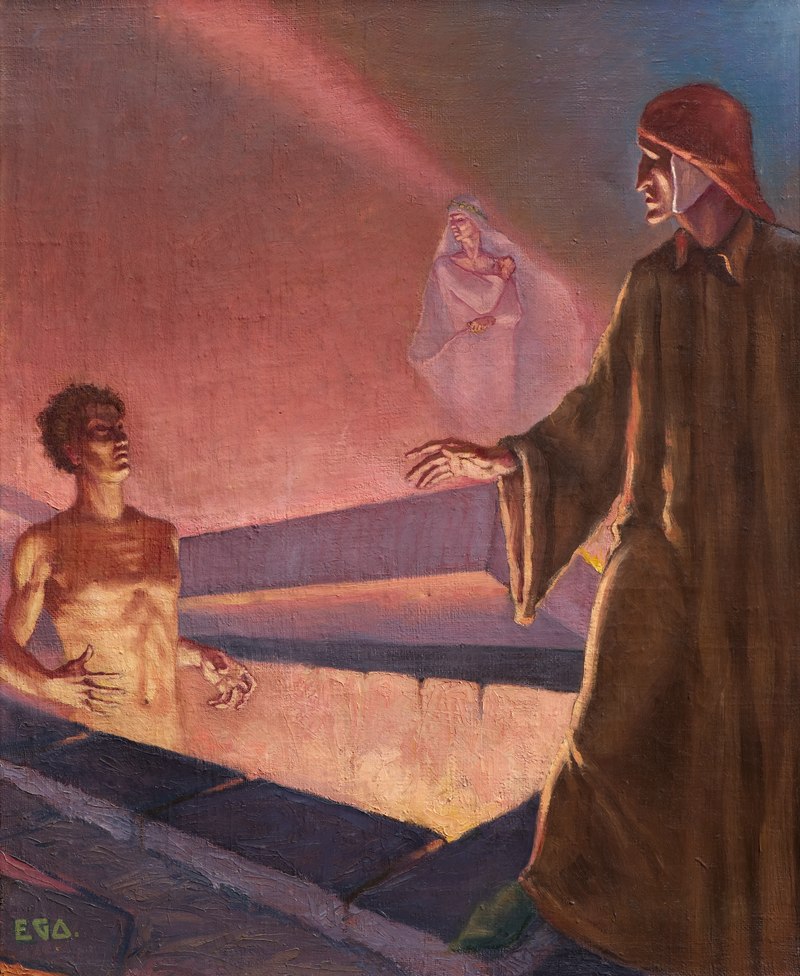
They evade the Minotaur and enter the Seventh Circle; it has three rings.
The first is for violence against neighbours, which includes murderers and warmongerers like Alexander the Great and Attila the Hun. They are submerged in a river of boiling blood patrolled by centaurs.
The first is for violence against neighbours, which includes murderers and warmongerers like Alexander the Great and Attila the Hun. They are submerged in a river of boiling blood patrolled by centaurs.
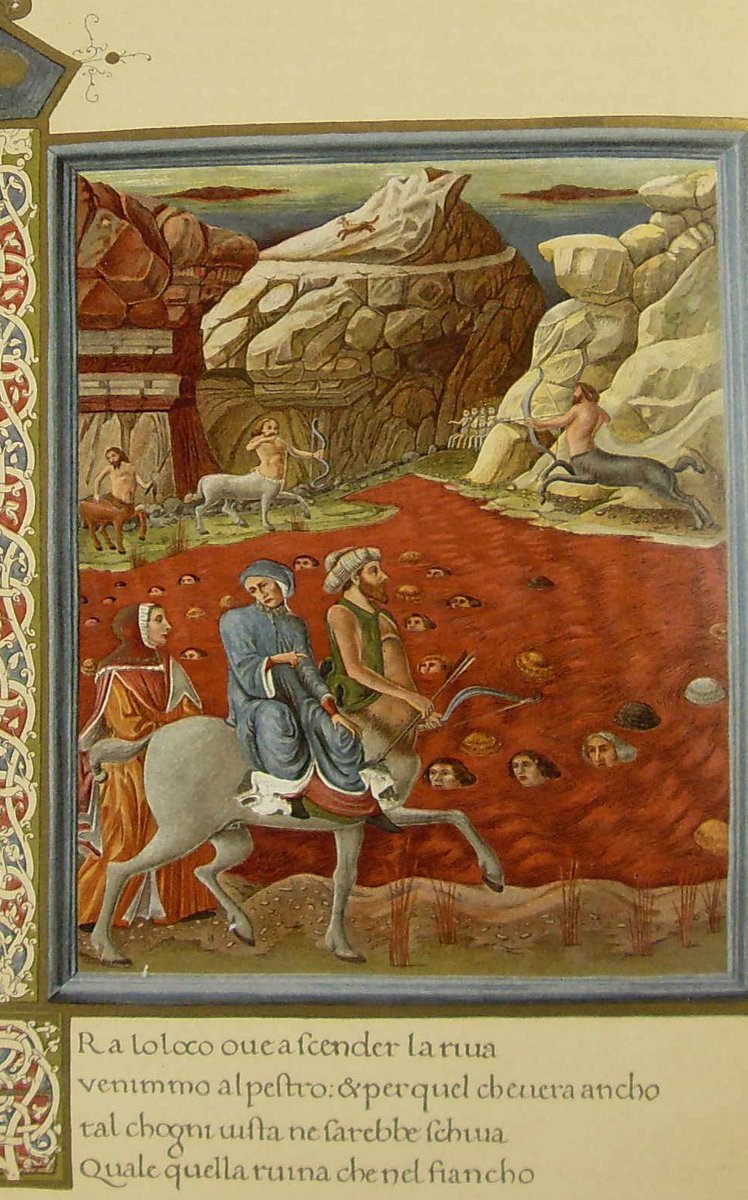
The second ring is for those who committed violence against the self, turned into trees and bushes fed upon by harpies.
And the third is for those guilty of violence against god - blasphemers, who live in a desert of burning sand beneath a steady rain of flames.

And the third is for those guilty of violence against god - blasphemers, who live in a desert of burning sand beneath a steady rain of flames.
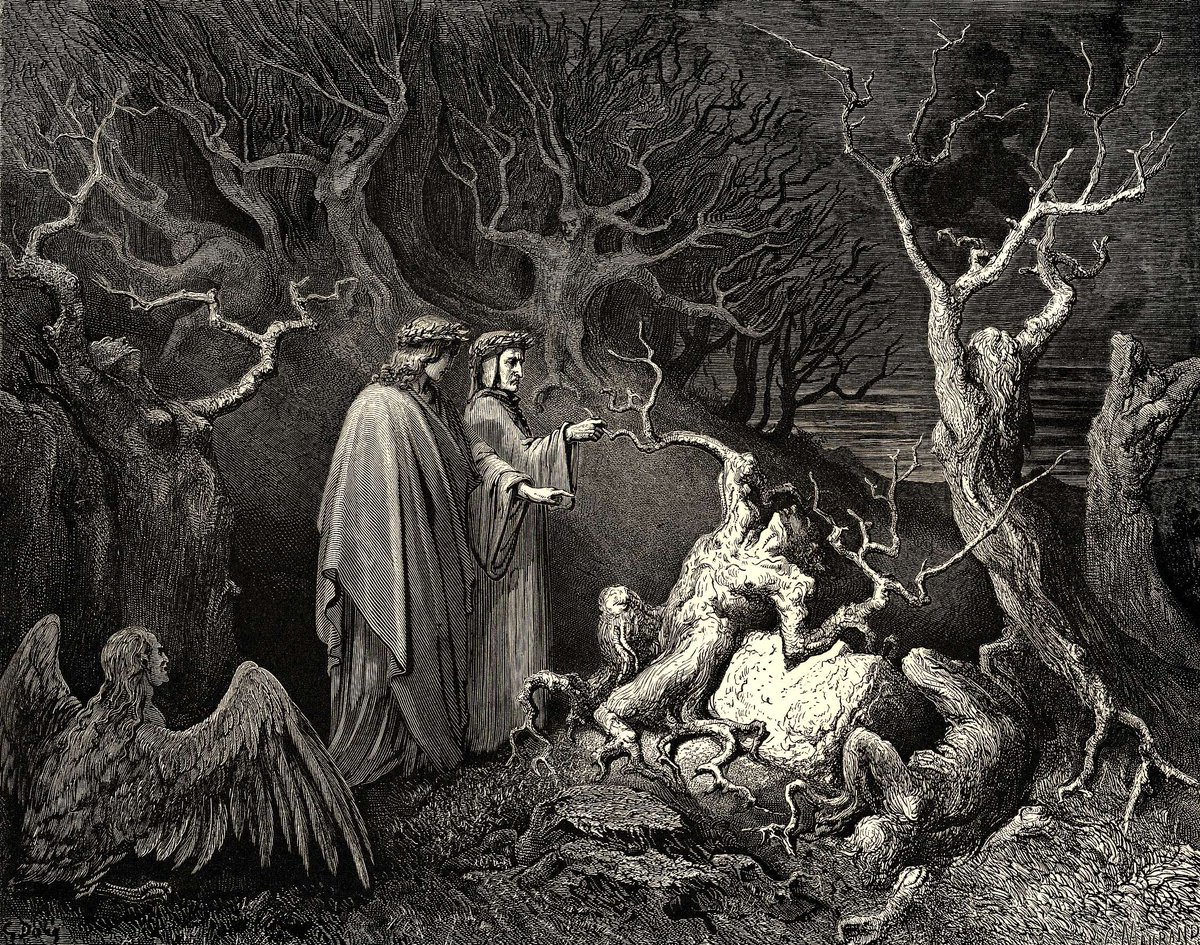
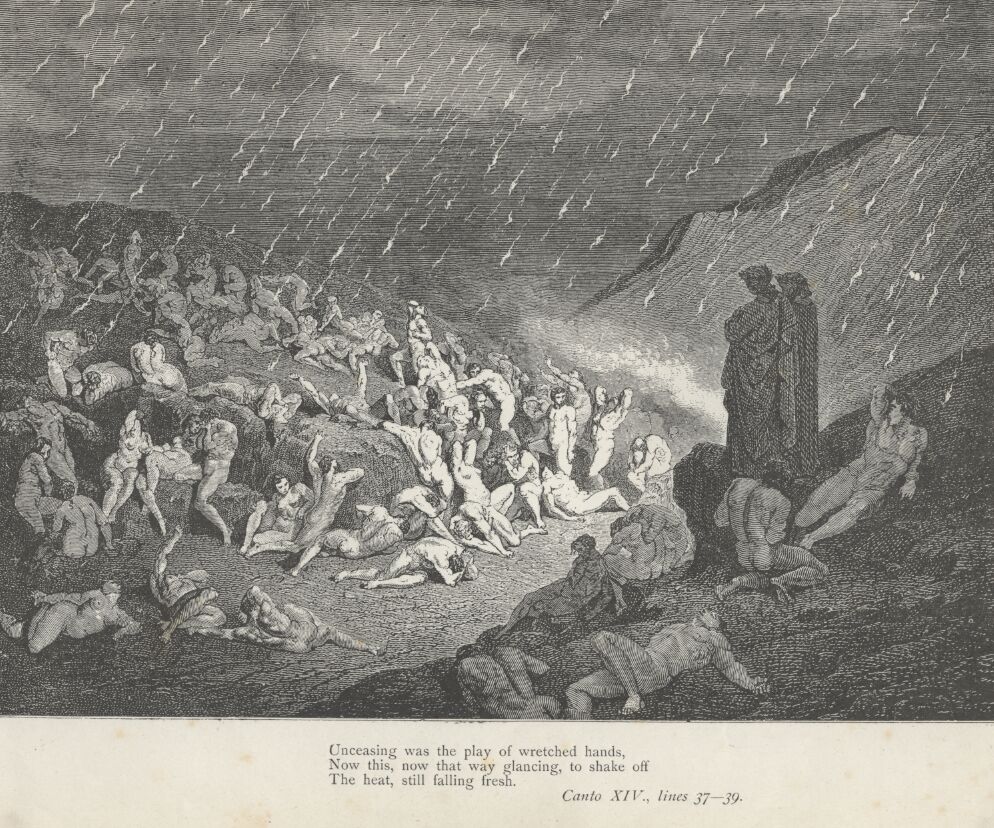
After leaving the Seventh Circle Dante and Virgil come across a huge waterfall which pours down into the Eighth Circle.
To get there they ride on a strange beast called Geryon.

To get there they ride on a strange beast called Geryon.
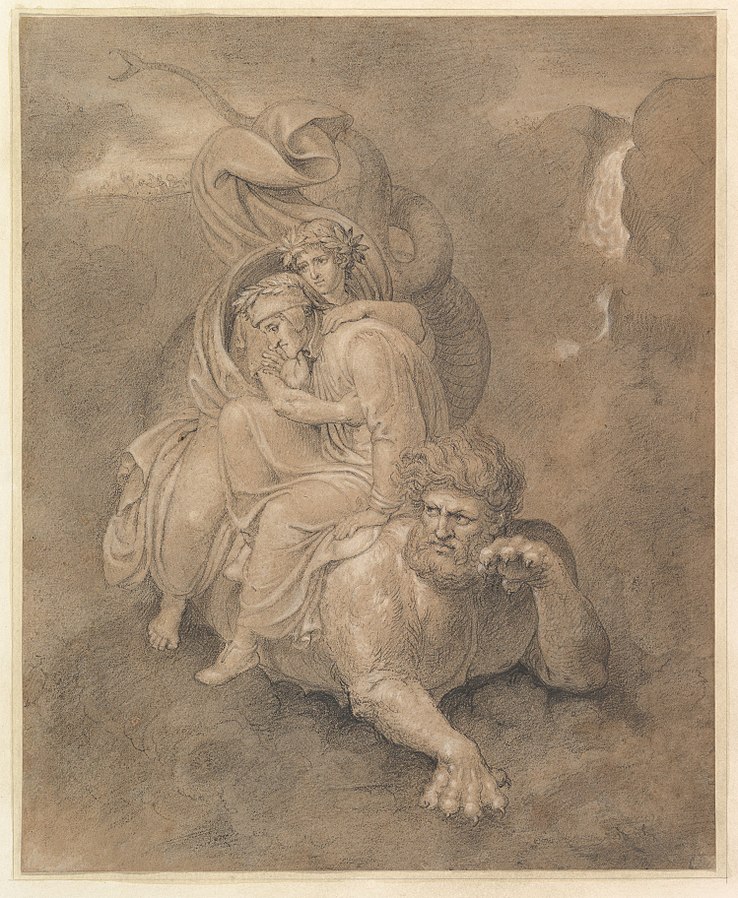
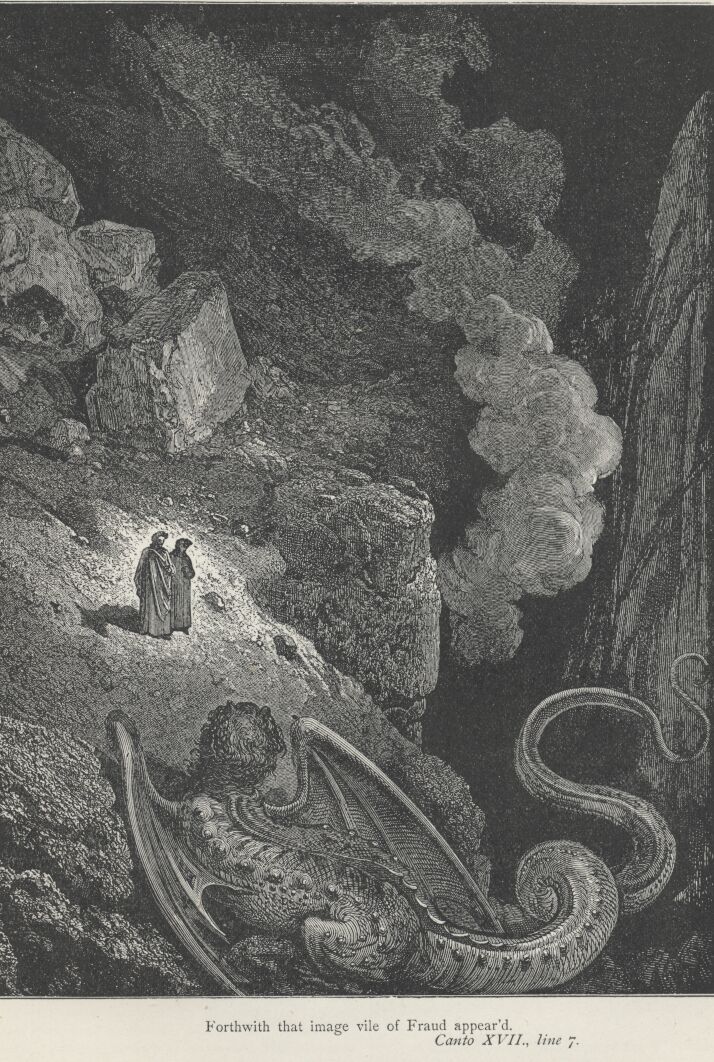
They descend to the Eighth Circle, known as the Malebolge. It is divided into ten ditches, each for different kinds of fraud.
In the first seducers (including Jason of the Argonauts) are whipped by demons, and in the second flatterers are buried in excrement.
In the first seducers (including Jason of the Argonauts) are whipped by demons, and in the second flatterers are buried in excrement.

In the third ditch those guilty of simony (the sale of religious offices and favours, essentially ecclesiastical bribery) are trapped upside down in stone holes with flames forever burning their feet.
Pope Nicholas III is here, soon to be followed by Pope Boniface VIII.
Pope Nicholas III is here, soon to be followed by Pope Boniface VIII.
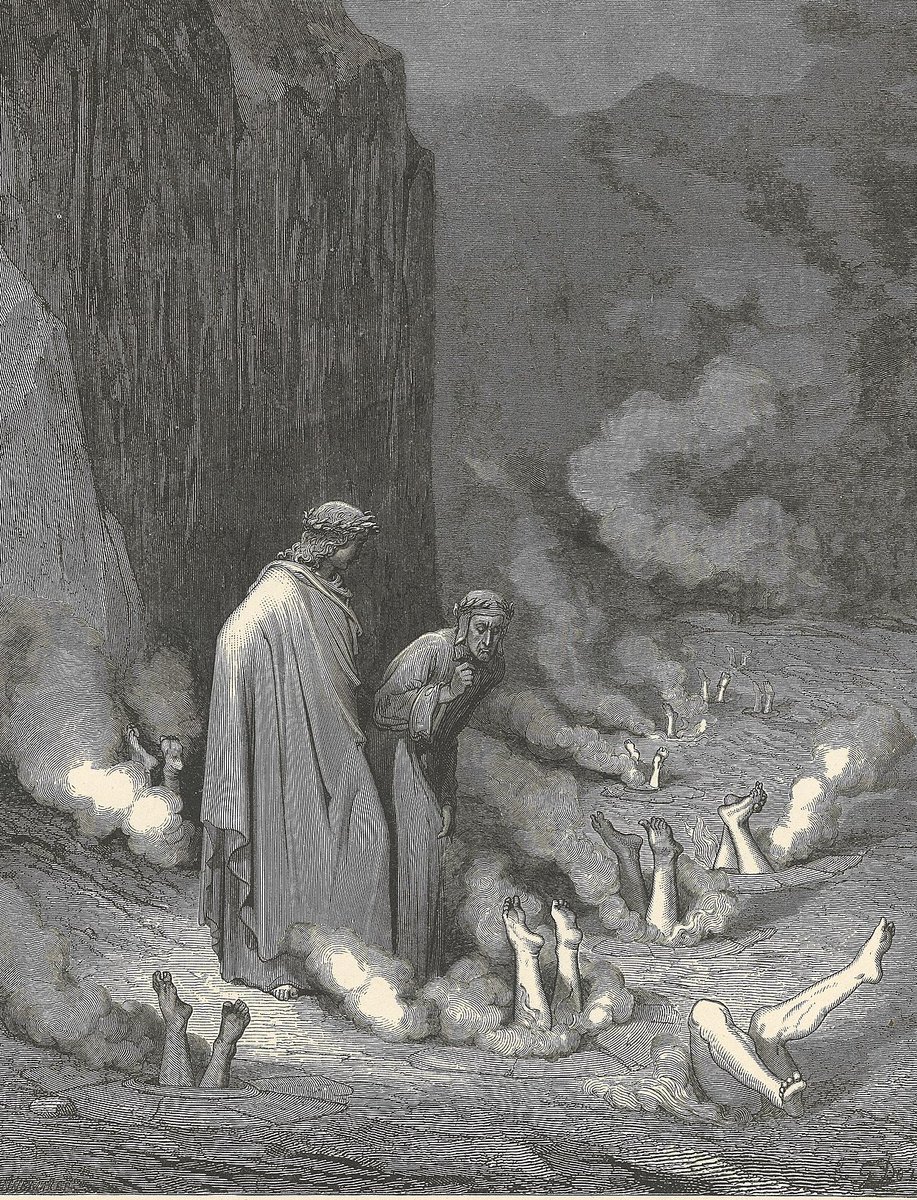
In the fourth ditch are sorcerers, astrologers, fortune tellers, and false prophets.
Their punishment is to have their heads twisted round, facing backwards, so they cannot see where they are going.
Their punishment is to have their heads twisted round, facing backwards, so they cannot see where they are going.

In the fifth ditch corrupt politicians and blackmailers and extortionists are immersed in a lake of boiling tar, with demons called Malebranche on hand to tear them apart if they try and escape.
In the sixth ditch hypocrites are forced to march around in robes made of lead.

In the sixth ditch hypocrites are forced to march around in robes made of lead.
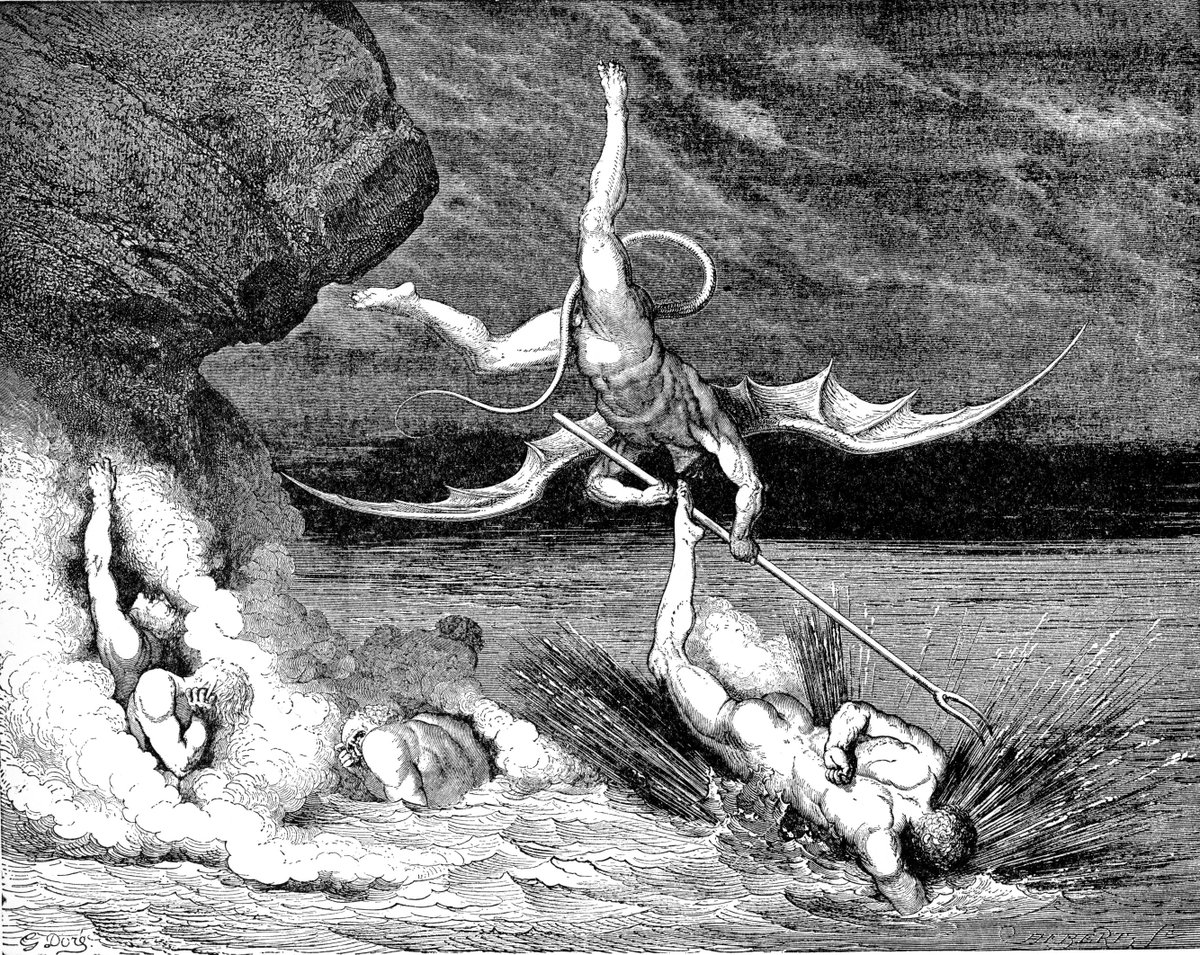

In the seventh ditch thieves are eaten alive by lizards, snakes, and other monstrous reptiles. And in the eighth ditch those who advised others to do fraudulent things (including Odysseus) wander round in a deep pit, each consumed by a single great flame. 

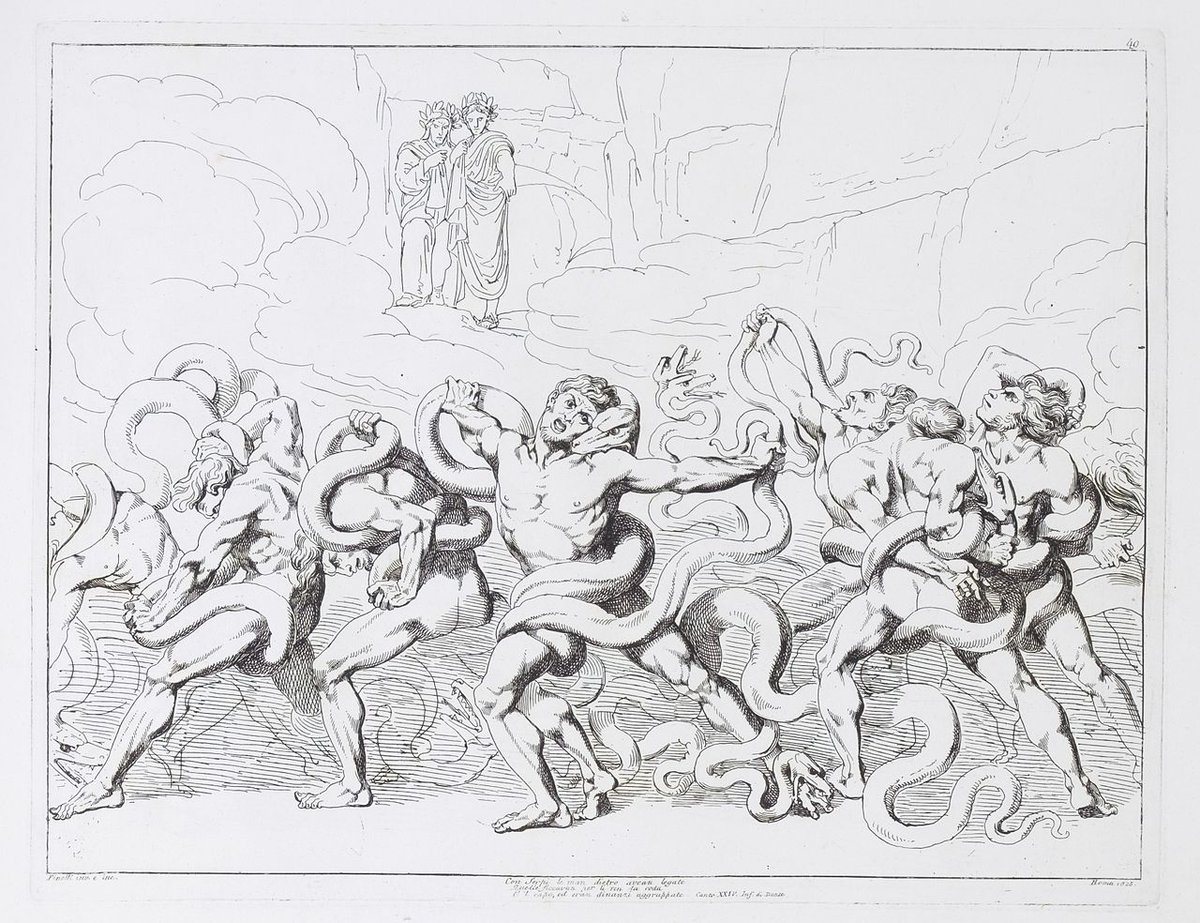
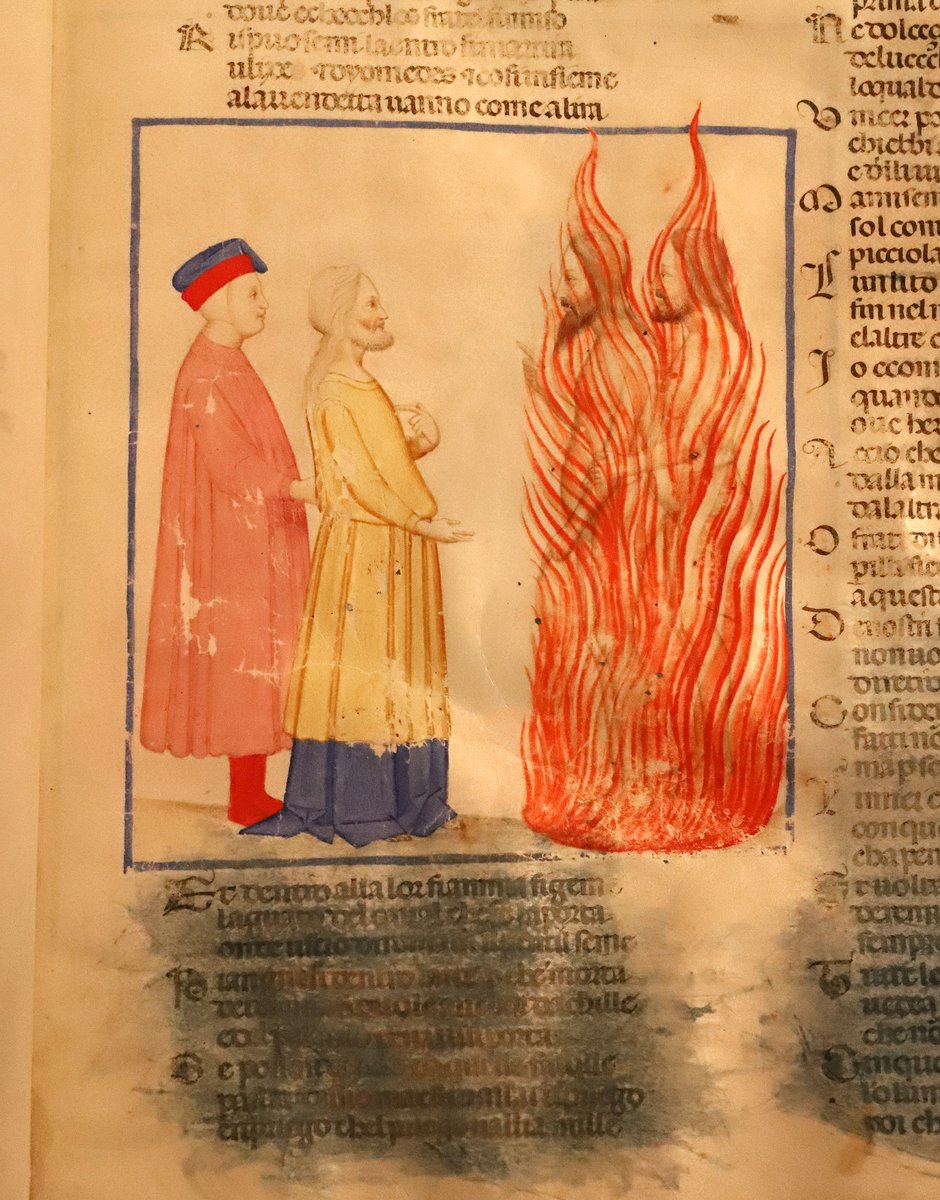
In the ninth ditch those who were politically divisive are mutilated by a demon with a sword; some have their limbs or heads cut off, and others are dismembered.
In the tenth ditch forgers and liars suffer from gruesome skin diseases that send them mad with the itching.

In the tenth ditch forgers and liars suffer from gruesome skin diseases that send them mad with the itching.
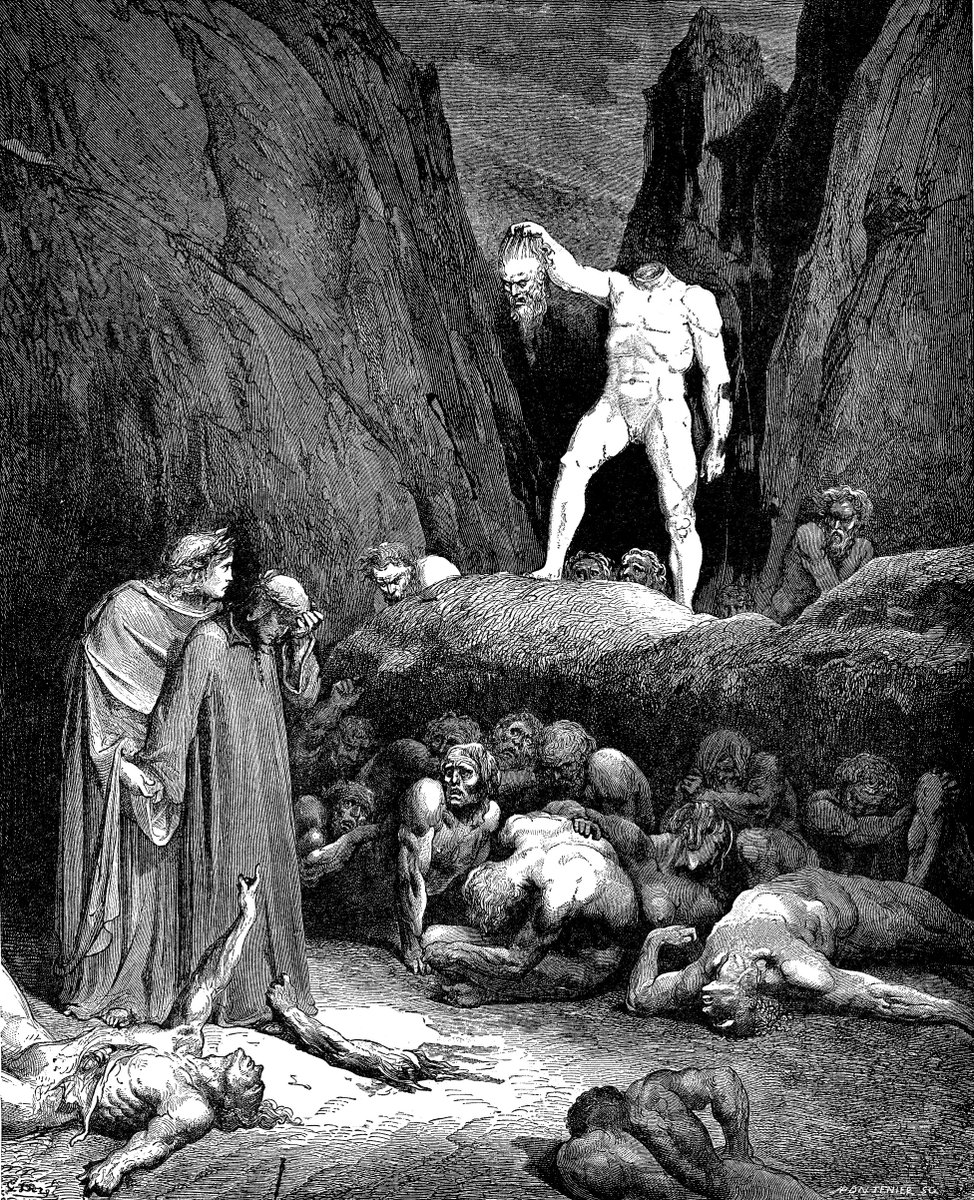

At the edge of the Eighth Circle is a vast well surrounded by a ring of giants and titans chained to its walls. These rebels against God (or the Gods) come from both Biblical and Classical mythology.
One of the giants helps Dante and Virgil down to the bottom of the well...
One of the giants helps Dante and Virgil down to the bottom of the well...
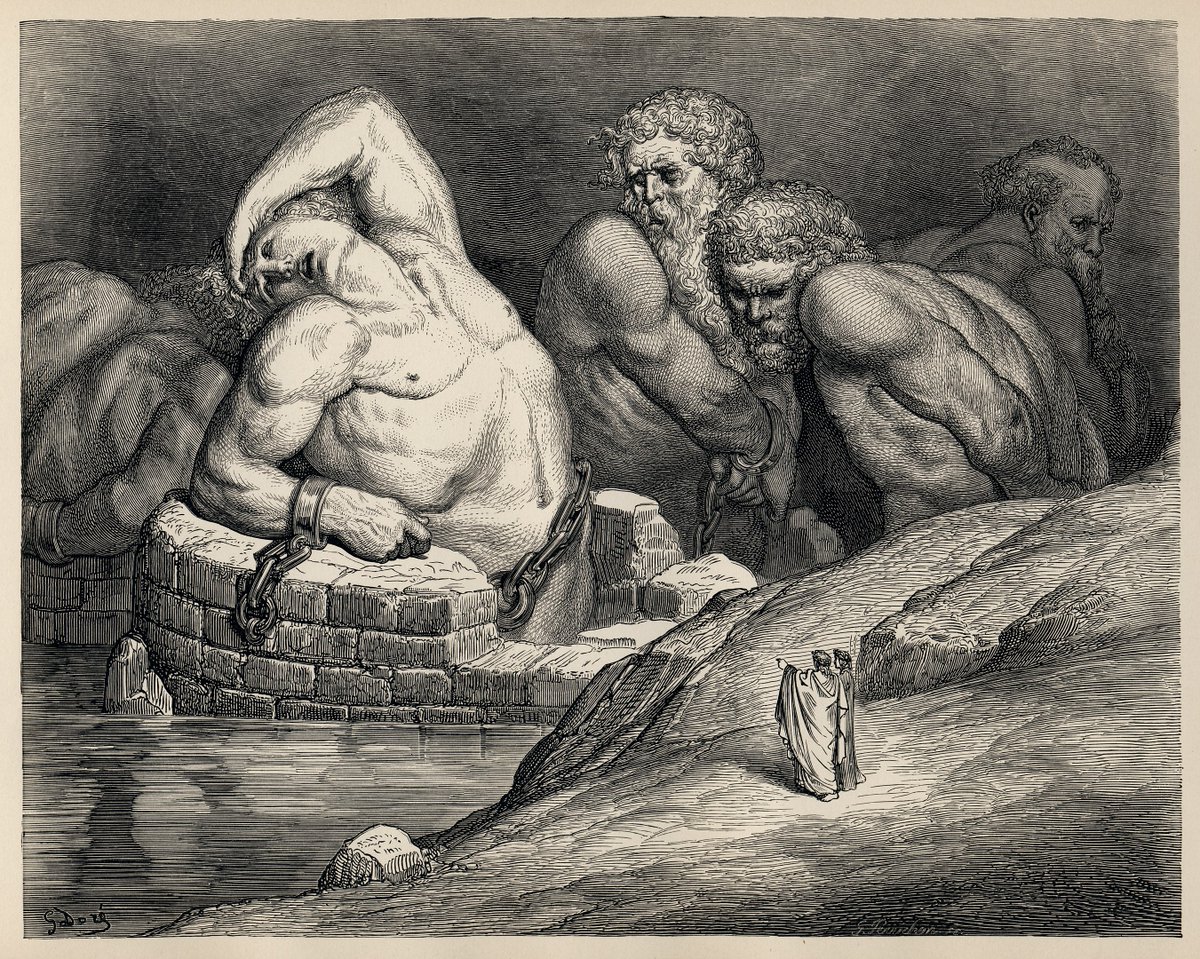
And so they arrive at the Ninth Circle, the deepest part of Hell, where those guilty of treachery are condemned to suffer.
It is a vast, frozen lake with four layers; the worse their treachery the closer they are to its centre. Cain and Mordred are just two of the people here.
It is a vast, frozen lake with four layers; the worse their treachery the closer they are to its centre. Cain and Mordred are just two of the people here.

Finally, at bottom of Hell, in the very centre of the Earth, in a vast and icy cavern, is Lucifer himself, an enormous beast with three heads frozen up to his waist for the ultimate treachery of betraying God. In his three mouths he devours Judas, Brutus, and Cassius. 

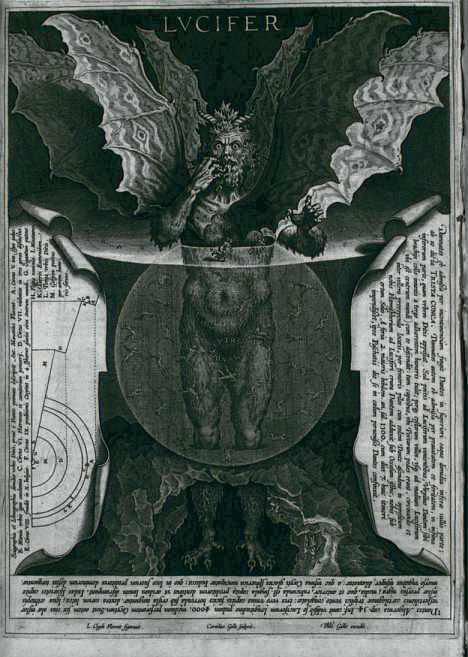

And then... it's over. Dante and Virgil have reached the bottom of the concentric circles of Hell.
They climb via a subterranean passage to the far side of the Earth and arrive at Mount Purgatory, where the next part of the Divine Comedy begins...

They climb via a subterranean passage to the far side of the Earth and arrive at Mount Purgatory, where the next part of the Divine Comedy begins...


Dante's Inferno was written seven hundred years ago and, along with his narrative of a journey through Purgatory and Heaven, forms the Divine Comedy.
For seven centuries it has fascinated, terrified, enchanted, and inspired - there's no other work of literature quite like it.
For seven centuries it has fascinated, terrified, enchanted, and inspired - there's no other work of literature quite like it.

If you enjoyed this then you'll probably like my newsletter.
Every Friday I write about art, architecture, history, and more, & it's all free.
To make your week a little more interesting, useful, and beautiful, consider joining 70k+ other readers here:
culturaltutor.com/areopagus
Every Friday I write about art, architecture, history, and more, & it's all free.
To make your week a little more interesting, useful, and beautiful, consider joining 70k+ other readers here:
culturaltutor.com/areopagus
• • •
Missing some Tweet in this thread? You can try to
force a refresh





















